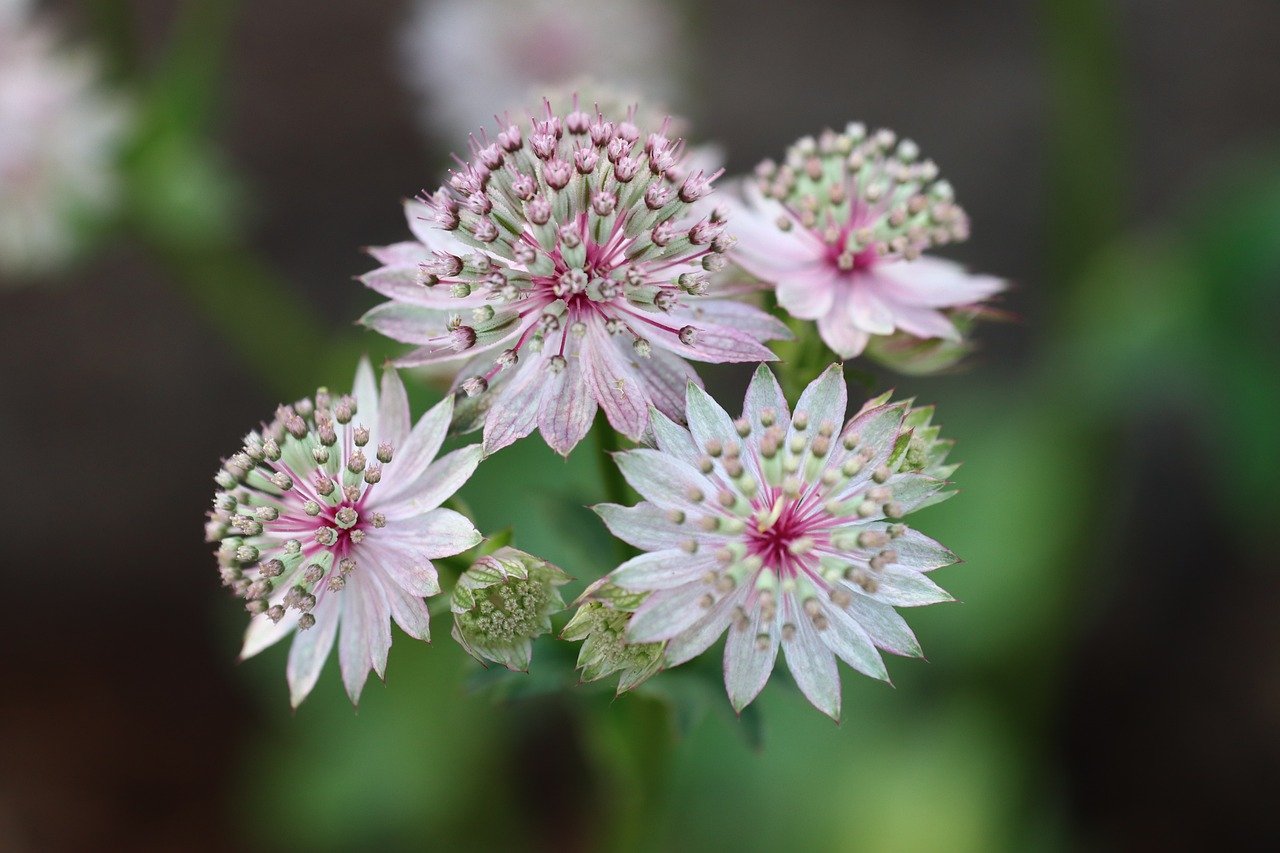Astrantia | The Star-Shaped Flower that Enriched European Garden Culture

Astrantia is a perennial plant native mainly to Europe. Because of its star-shaped blossoms and delicate beauty, it is also known as the “star flower.”
It is highly popular as both a garden plant and a cut flower. Its graceful presence adds a natural charm to any garden.
In this article, I will introduce Astrantia in detail, from its basic information to its cultural background, history, and gardening tips.
Basic Information
- Scientific name: Astrantia major
- Family: Apiaceae (carrot family)
- Origin: Europe, Middle East
- Appearance: Astrantia features a unique structure in which small clustered flowers are surrounded by star-shaped bracts. It comes in a wide variety of colors, including white, pink, red, and greenish shades. The plant grows to a height of 40–90 cm.
- Blooming season: Late spring to summer (May to July). In cooler climates, the blooming period can last even longer.
Cultural Significance Around the World

Astrantia has played an important role in European garden culture.
Its simple, natural beauty is frequently used in English cottage gardens and naturalistic garden designs, where it blends harmoniously with other wildflowers.
Because its blossoms resemble stars, Astrantia is affectionately known by the romantic name “star flower.”
It also enjoys high popularity in the world of flower arrangement. Thanks to its durability and soft colors, Astrantia is often included in wedding bouquets and event decorations.
Historical Background
Astrantia became widely known in Europe around the 16th century.
In the Alpine regions and rural villages of England, it was loved not only as an ornamental plant but also as a flower that symbolized the natural landscape of the countryside.
During the Middle Ages, star motifs were commonly used in decorative arts, and Astrantia’s star-shaped flowers matched perfectly with that aesthetic ideal.
Its name derives from the Greek word astron (meaning “star”), reflecting how its unique form sparked the imagination of people in ancient times.
Botanists of the 16th century recorded Astrantia as a beautiful symbol of Europe’s mountainous landscapes.
Gardening Advice

Astrantia is a hardy plant that thrives in cool climates and is relatively easy to cultivate.
The ideal environment is partial shade to full shade. In regions with strong direct sunlight, it is best planted where it can be shaded in the afternoon.
Astrantia prefers soil that is both well-drained and moisture-retentive.
Planting in spring or autumn is recommended. Once established, it will return every year with beautiful flowers. Watering during the blooming period helps prolong the blossoms, and pruning can encourage new flowers to develop.
In cooler climates, its foliage remains attractive even after flowering, making it useful as ground cover.
Although Astrantia can also be grown from seeds, germination requires cold conditions. Performing a “cold stratification” treatment that takes advantage of winter chill yields the best results.
Replanting is recommended every few years in spring or autumn. Dividing crowded roots at this time will promote fresh growth.
Conclusion
With its graceful and delicate blossoms combined with ease of cultivation, Astrantia is cherished by gardeners of all levels, from beginners to experienced enthusiasts.
I encourage you to grow Astrantia in your garden or in pots, and enjoy the star-like beauty it brings into everyday life.





